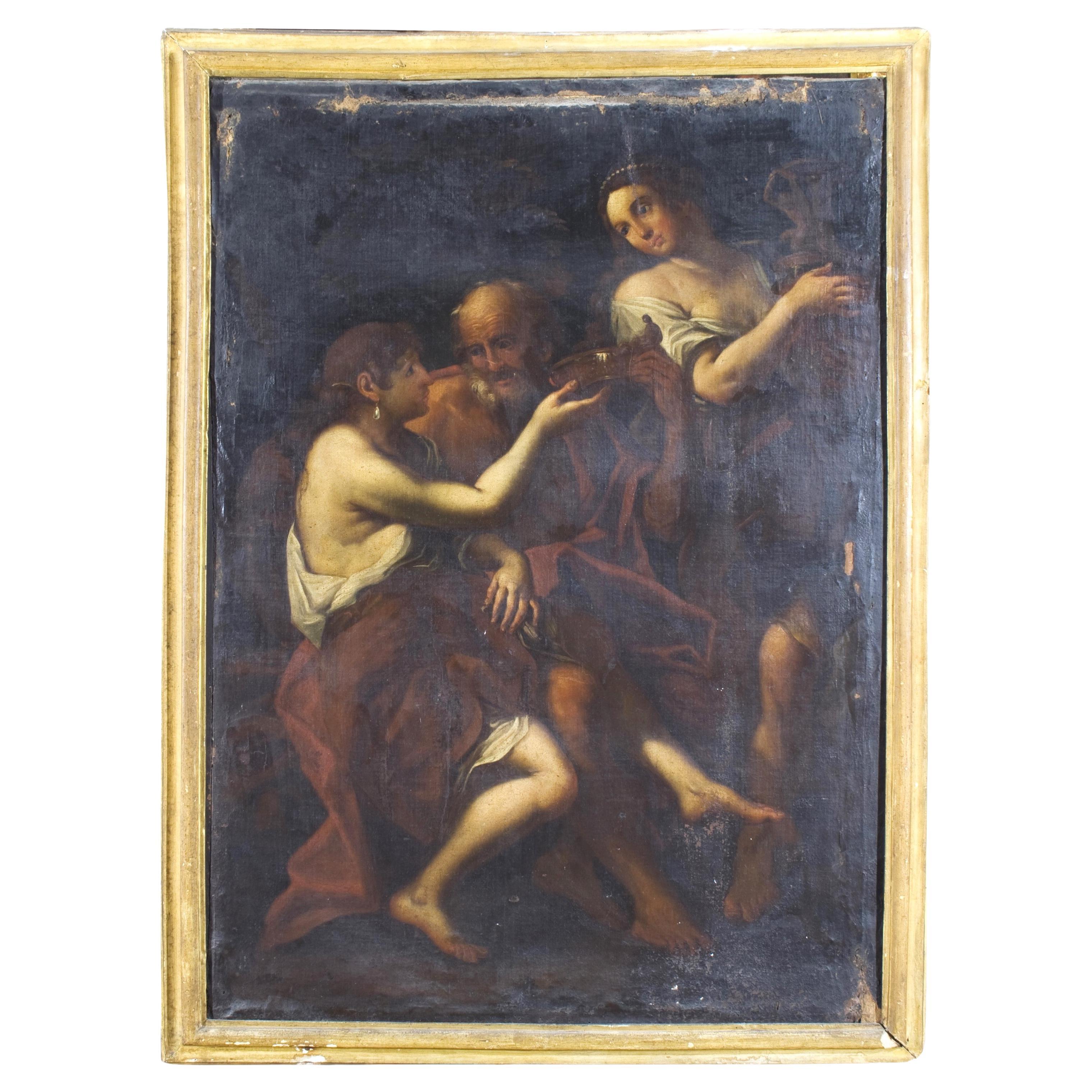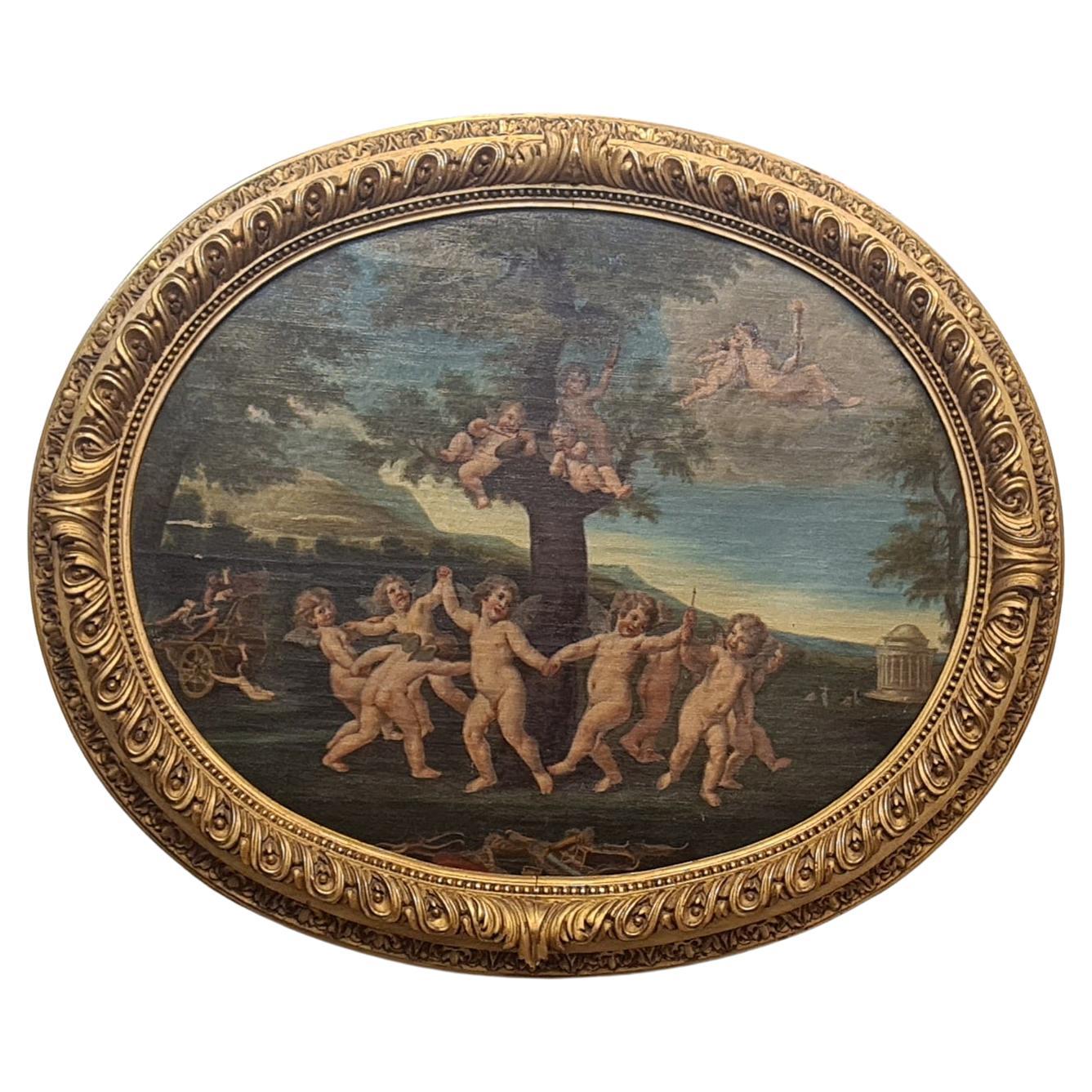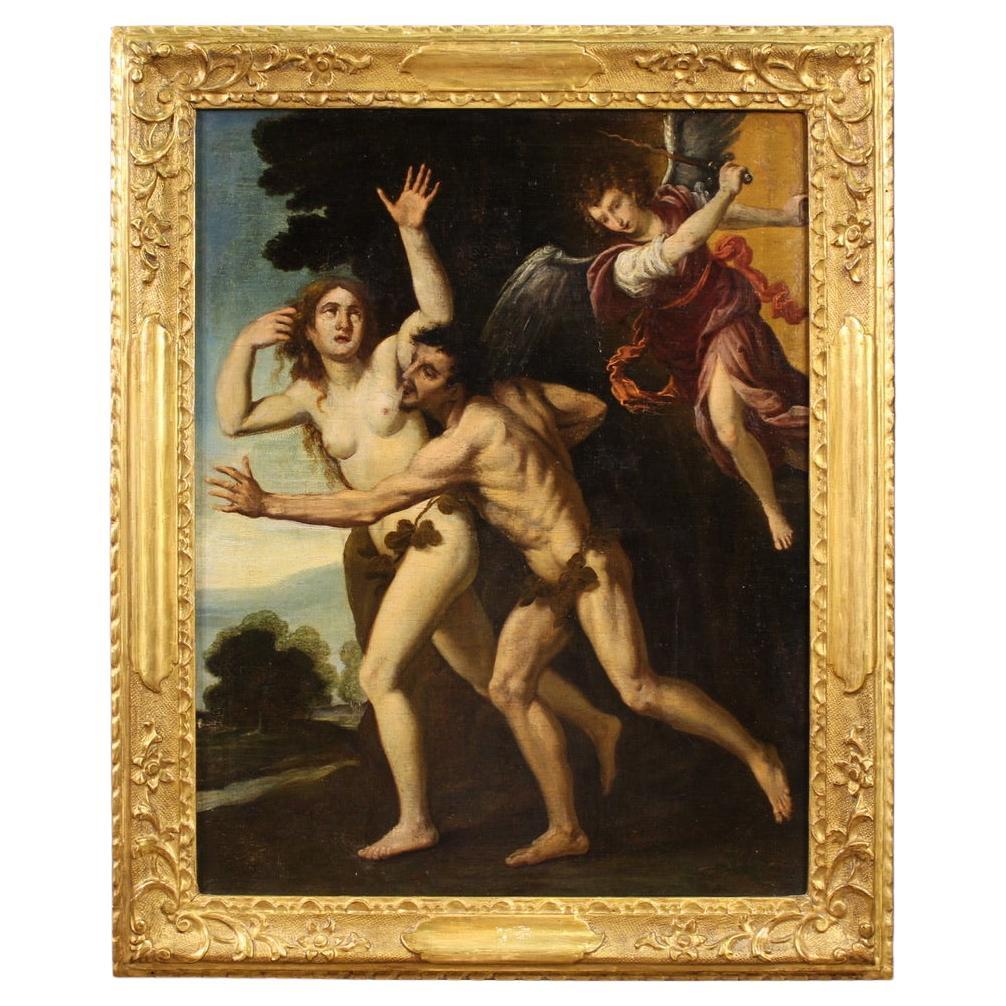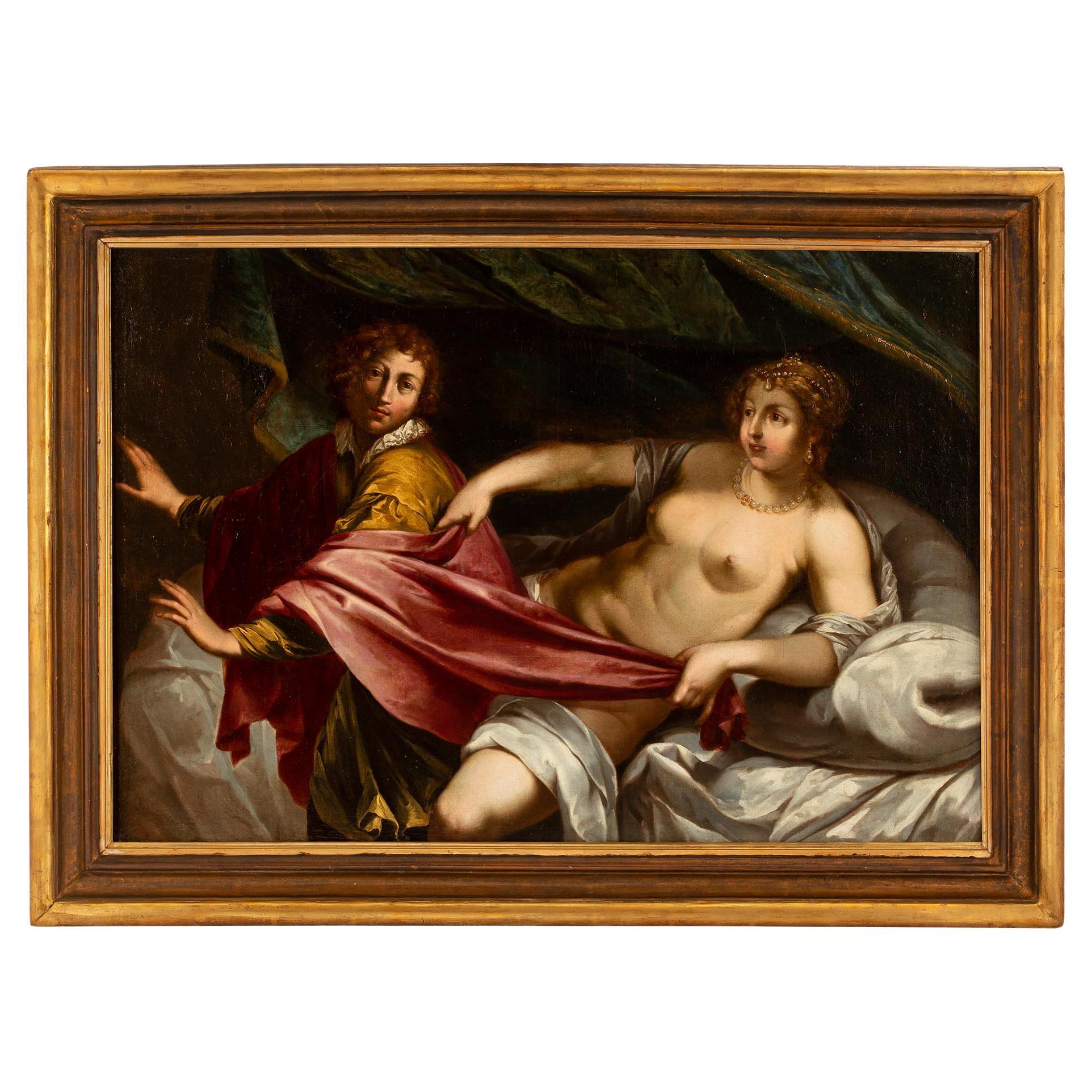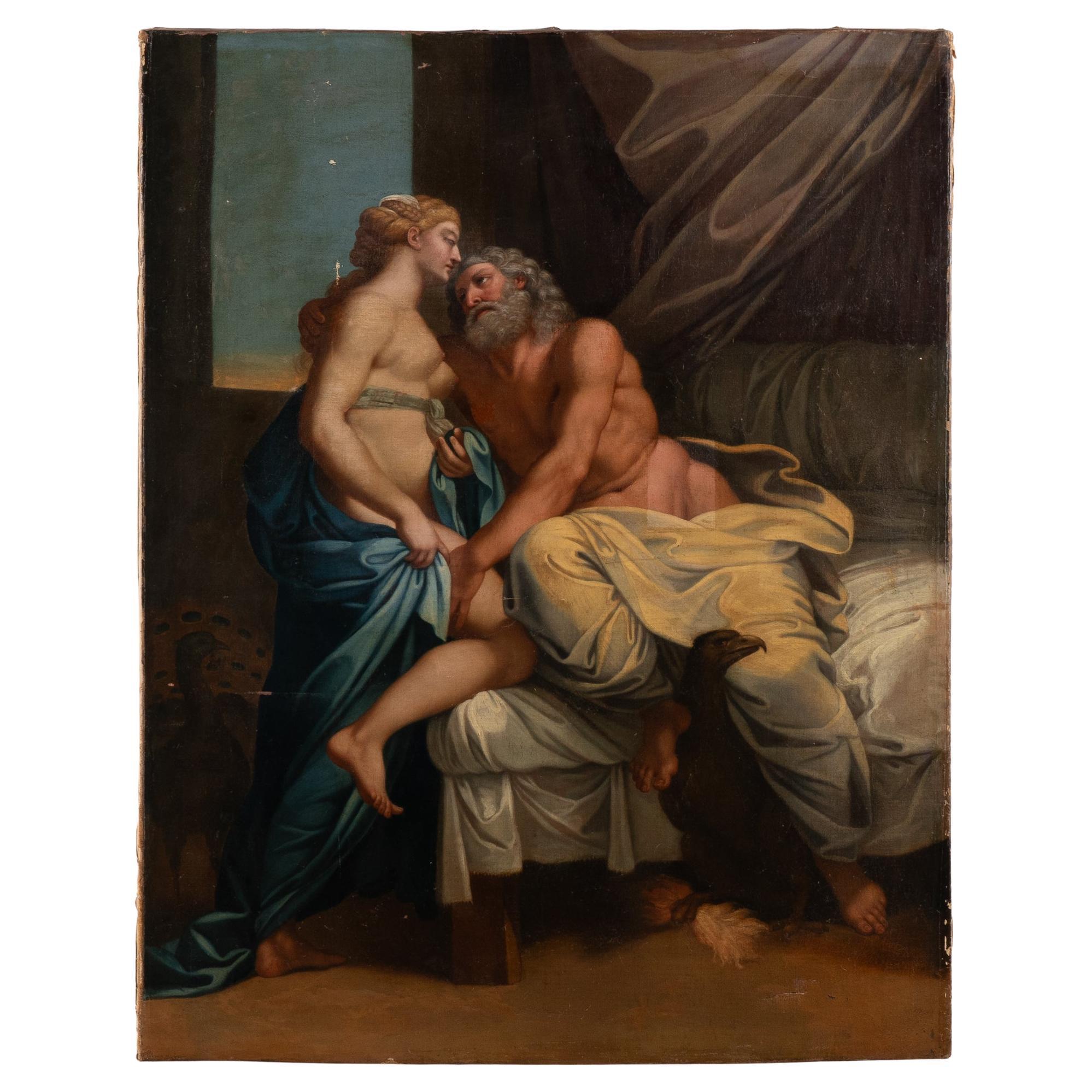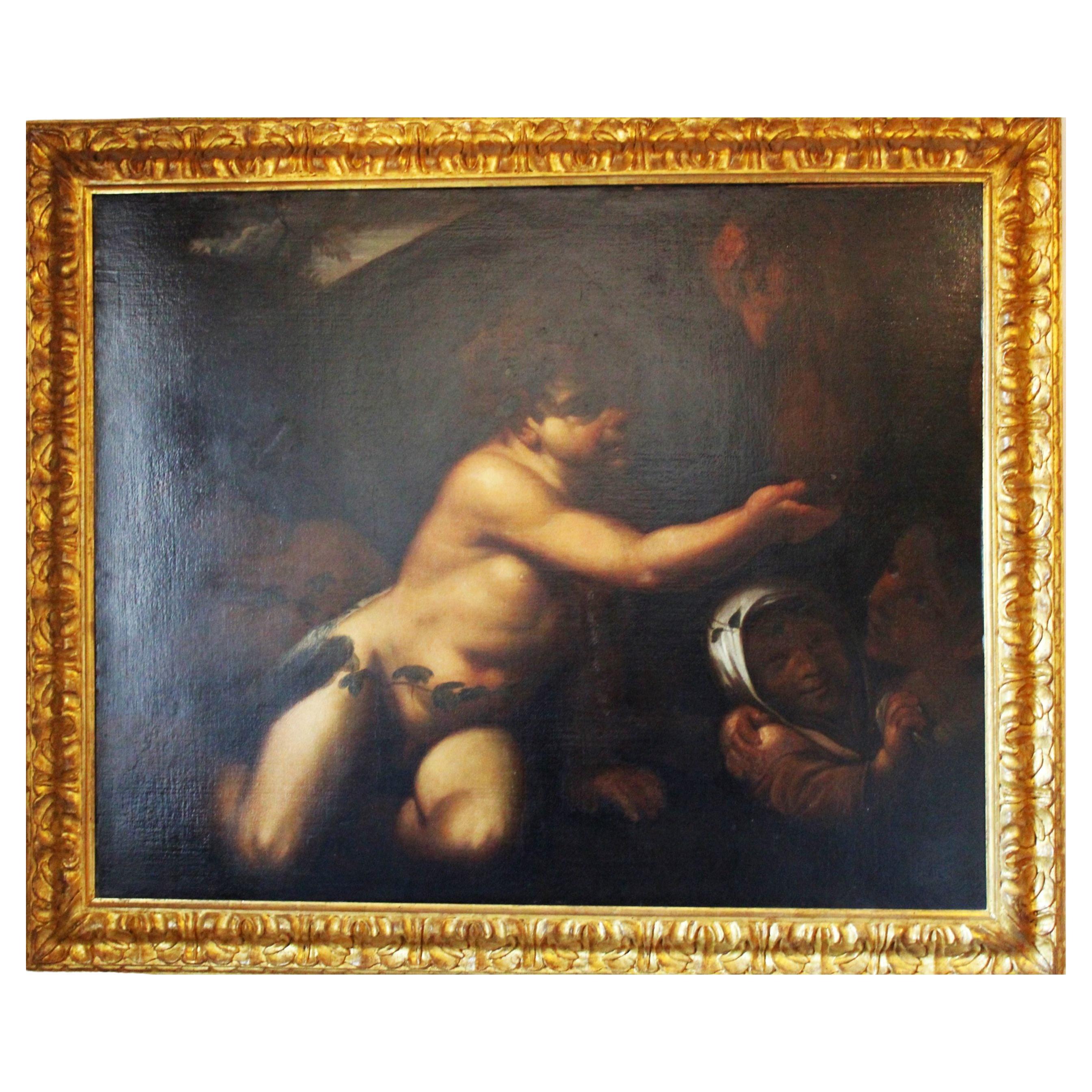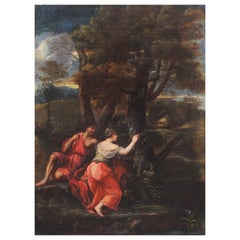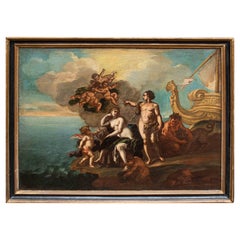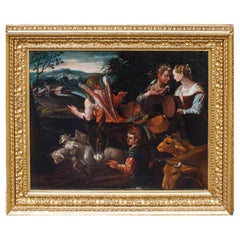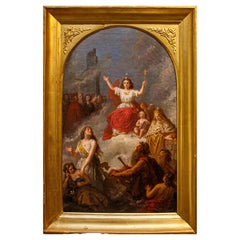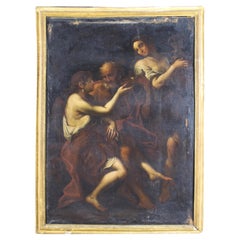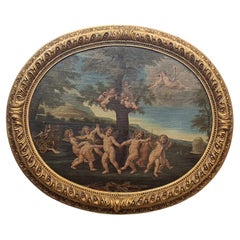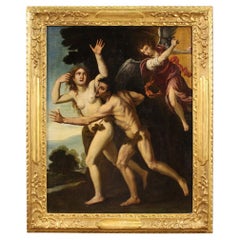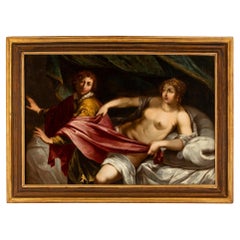Items Similar to 17th century Oil on canvas depicting the Rape of Proserpine
Want more images or videos?
Request additional images or videos from the seller
1 of 21
17th century Oil on canvas depicting the Rape of Proserpine
$18,542.58
£13,808.44
€15,600
CA$25,600.54
A$28,381.98
CHF 14,915.84
MX$347,348.87
NOK 186,283.64
SEK 174,845.83
DKK 118,773.20
About the Item
Sienese school of the 17th century
The rat of Proserpina
Oil on canvas, 188 x 123 cm
Depicted at the climax of the action, at the height of drama, is the scene of the Rape of Proserpine ( for the Greeks Persephone) daughter of Ceres. The protagonist of the story is Proserpine, the Roman version of the Greek Persephone, daughter of the agricultural goddess Ceres (Demeter in Greek). These two mythological figures since the beginning of time have been closely linked to the cult of the earth, agriculture and the changing seasons, and, known as the protagonists of the "Eleusinian Mysteries," are also celebrated as "the divine couple." One day, while Proserpina was intent on picking flowers on the shores of Lake Pergusa, near present-day Enna, the underworld god Pluto, known to the Greeks as Hades, became so enamored with her that he decided to kidnap the maiden and take her with him to the realm of the dead. Proserpina's heartbreaking cry for help reached the ears of her mother, who, in despair over the fate of her daughter, wandered nine days and nights, searching for Proserpina throughout Greece and holding two lit torches in her hands. At last Ceres learned from Helios how her Proserpine had been forcibly dragged by Pluto to the afterlife, so, enraged and in grief, she threatened to stop attending to her divine functions until her daughter returned to Earth. She took refuge, therefore, in Eleusis, where she was received with great warmth and hospitality. Meanwhile, however, everything on Earth was beginning to die, and famines began to rage among desperate humans. It was for this reason that Jupiter, concerned about the fate of men, ordered Pluto to let his young bride go free, allowing her to be reunited with her mother. The god of the Underworld agreed, but, reluctant to give up his bride, he cunningly fed Proserpina some pomegranate grains, binding her permanently and forever to the realm of the dead. Ceres and Pluto thus had to give in to a compromise: the young girl would live six months on Earth with her mother and the remaining six months in the Underworld with Hades. During the time spent with Hades, from early autumn (planting time) until the end of winter, cold would reign on Earth and the fields would not bear fruit. At the blossoming of spring, however, Proserpine would be free to return home and Ceres, happy to have her daughter back with her, would give new life, the earth would be fertile and she would feed all men with her crops.
The climax of the action, the moment of abduction, is depicted in the present painting. Pluto, proud and unfeeling, mighty and muscular tries to drag Proserpine into the underworld by force. The God's muscles are tensed in an effort to support the body of the maiden who, though petite, tries to escape and wriggle out of Pluto's tight grip. Behind the god is a glimpse of his horse-drawn chariot from whose mouth flames gush forth, flames that are also found at the feet of the group indicating the inevitable fate of the young woman.
The mythological subject was highly prized by artists who created several versions of it over the centuries, of course the most famous being Bernini's The Rape of Proserpine, contained today in the Borghese Gallery.
- Dimensions:Height: 74.02 in (188 cm)Width: 48.43 in (123 cm)Depth: 1.97 in (5 cm)
- Materials and Techniques:
- Period:
- Date of Manufacture:17th Century
- Condition:Refinished. Wear consistent with age and use.
- Seller Location:Milan, IT
- Reference Number:1stDibs: LU5918237120882

About the Seller
5.0
Vetted Professional Seller
Every seller passes strict standards for authenticity and reliability
Established in 2000
1stDibs seller since 2021
30 sales on 1stDibs
Typical response time: 1 to 2 days
- ShippingRetrieving quote...Shipping from: Milan, Italy
- Return Policy
Authenticity Guarantee
In the unlikely event there’s an issue with an item’s authenticity, contact us within 1 year for a full refund. DetailsMoney-Back Guarantee
If your item is not as described, is damaged in transit, or does not arrive, contact us within 7 days for a full refund. Details24-Hour Cancellation
You have a 24-hour grace period in which to reconsider your purchase, with no questions asked.Vetted Professional Sellers
Our world-class sellers must adhere to strict standards for service and quality, maintaining the integrity of our listings.Price-Match Guarantee
If you find that a seller listed the same item for a lower price elsewhere, we’ll match it.Trusted Global Delivery
Our best-in-class carrier network provides specialized shipping options worldwide, including custom delivery.More From This Seller
View All17th Century Angelica and Medoro Painted Oil on Canvas Roman School
Located in Milan, IT
Roman School, 17th century
Angelica and Medoro engrave their names on the bark of a tree
Oil on canvas, 65 x 48.5 cm
The canvas depicts one of the most famous episodes of O...
Category
Antique 17th Century Italian Paintings
Materials
Canvas
Neapolitan school of the 17th-18th centuries, Bacchus and Ariadne abandoned by Theseus
Located in Milan, IT
Neapolitan school of the 17th-18th centuries
Bacchus and Ariadne abandoned by Theseus
Oil on canvas, 74 x 100 cm
Framed, 89 x 111 cm
The painting under consideration, attributab...
Category
Antique 18th Century and Earlier Italian Other Paintings
Materials
Canvas
Venetian school, Tobias and Sara in Nineveh, oil on canvas, 16th century
Located in Milan, IT
Venetian School, second half of the 16th century
Tobiah and Sarah led to Nineveh by the archangel Azariah
Oil on canvas, 48 x 56 cm - Framed, 58 x 72 cm
The present canvas, made w...
Category
Antique 16th Century Paintings
Materials
Canvas
painting depicting Allegory of Italy, Oil on canvas, 19th century
Located in Milan, IT
19thC
Allegory of Italy
Oil on canvas 64 x 40
Framed, 73 x 50 cm
During the 19th century, the fervent Italian cultural climate dominated by the aspiration for an Italy finally un...
Category
Antique 19th Century Paintings
Materials
Canvas
Venetian school, mid-18th century, Loth and daughters
Located in Milan, IT
Venetian school, mid-18th century
Loth and the daughters
Oil on canvas, 43 x 57 cm
Framed, 70 x 84 cm
The canvas under consideration clearly depicts Loth and his daughters, the p...
Category
Antique 18th Century and Earlier Italian Other Paintings
Materials
Canvas
Flemish artist active in Italy, 17th century, Penitent Magdalene
Located in Milan, IT
Flemish artist active in Italy, 17th century
Penitent magdalene
Oil on panel, 37.5 x 30.5 cm
Framed, cm 53 x 45
Provenance: Luigi Bellini Gallery, Florence; Private Collection, ...
Category
Antique 18th Century and Earlier Dutch Other Paintings
Materials
Canvas
You May Also Like
Italian 13th century oil on canvas painting "Lot and Daughters"
Located in Cesena, FC
Lot and his daughters, EMILIAN SCHOOL
XVIIIth century
Oil on canvas 175 x 126 cm
Lot and his daughters is one of the themes most frequently encountered by seventeenth-century pain...
Category
Antique 18th Century Italian Baroque Paintings
Materials
Canvas, Paint
Oil on canvas painting depicting 18th century allegorical scene 19thC
Located in Torino, IT
Oval painting depicting the dance of cupids.
Romantic oil painting on canvas with an oval shape and gold leaf gilded frame.
The extraordinarily refined and highly decorative painti...
Category
Antique Late 19th Century Italian Paintings
Materials
Canvas, Paint
$1,388 Sale Price
20% Off
17th Century Oil on Canvas Italian Painting Expulsion of Adam and Eve
Located in Vicoforte, Piedmont
Rare 17th century Italian painting. Oil on canvas artwork depicting the expulsion of Adam and Eve from the Garden of Eden, one of the most powerful and dramatic subjects in biblical ...
Category
Antique 1640s Italian Paintings
Materials
Canvas
Italian 17th century Venetian st. painting of Joseph fleeing Potiphar's Wife
Located in West Palm Beach, FL
A striking Italian 17th century Venetian st. oil on canvas painting of Joseph fleeing Potiphar's Wife. The painting depicts the classical scene of Potiphar's wife seducing Joseph. As...
Category
Antique 17th Century Italian Paintings
Materials
Canvas, Wood
Large Original Oil on Canvas Painting of Zeus and Hera, Italy circa 1700's
Located in Round Top, TX
The colors remain vivid in this 4' tall original oil on canvas painting of Greek gods Zeus and Hera. Unsigned.
This portrayal of the love of the gods includes Zeus, king of the gods ...
Category
Antique 18th Century Italian Classical Greek Paintings
Materials
Canvas, Wood, Paint
Oil on canvas, (attributed to Giacinto Brandi, Rome)
Located in Rome, IT
Oil on canvas, (attribuito Giacinto Brandi , Roma 1621 – 19 January 1691 ) L'educazione di Bacco ADDITIONAL PHOTOS, INFORMATION OF THE LOT AND QUOTE FOR SHIPPING COST CAN BE REQUEST ...
Category
Antique 17th Century European Paintings
Materials
Canvas
$34,232 Sale Price
20% Off
More Ways To Browse
Tutti I Frutti
Le Nove
S Cavallo
Antique Shiva
Antique Slant Top Writing Desk
Antique Wedgwood Bowl
Art Deco Cabinet Bakelite
Art Deco Vintage Cigarette Case
Asian Black Lacquer Pearl Furniture
Asian Tall Cabinets
Blue Bohemian Crystal
Buffalo Mount
Chinese Meditation Stone
Chinoiserie Silk Fabric
Dutch Floral Marquetry
Dutch Oak Chest
Ebony Wood Ring
Folk Art Bull
